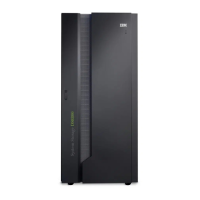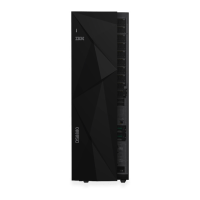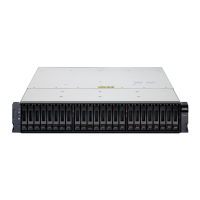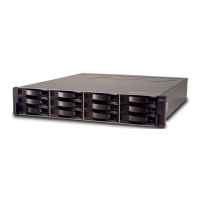On open volumes with 512 byte blocks (including T10-protected volumes), you can specify an exact block
count to create a LUN. You can specify a standard LUN size (which is expressed as an exact number of
binary GiBs (2
30
)) or you can specify an ESS volume size (which is expressed in decimal GiBs (10
9
)
accurate to 0.1 GB). The unit of storage allocation for xed block open systems volumes is one extent.
The extent sizes for open volumes is either exactly 1 GiB, or 16 MiB. Any logical volume that is not an
exact multiple of 1 GiB does not use all the capacity in the last extent that is allocated to the logical
volume. Supported block counts are from 1 to 4 194 304 blocks (2 binary TiB) in increments of one block.
Supported sizes are from 1 to 16 TiB in increments of 1 GiB. The supported ESS LUN sizes are limited to
the exact sizes that are specied from 0.1 to 982.2 GB (decimal) in increments of 0.1 GB and are rounded
up to the next larger 32 K byte boundary. The ESS LUN sizes do not result in standard LUN sizes.
Therefore, they can waste capacity. However, the unused capacity is less than one full extent. ESS LUN
sizes are typically used when volumes must be copied between the storage system and ESS.
On open volumes with 520 byte blocks, you can select one of the supported LUN sizes that are used on
IBM i processors to create a LUN. The operating system uses 8 of the bytes in each block. This leaves 512
bytes per block for your data. Variable volume sizes are also supported.
Table 14 on page 33 shows the disk capacity for the protected and unprotected models. Logically
unprotecting a storage LUN allows the IBM i host to start system level mirror protection on the LUN. The
IBM i system level mirror protection allows normal system operations to continue running in the event of
a failure in an HBA, fabric, connection, or LUN on one of the LUNs in the mirror pair.
Note: On IBM i, logical volume sizes in the range 17.5 GB to 141.1 GB are supported as load source units.
Logical volumes smaller than 17.5 GB or larger than 141.1 GB cannot be used as load source units.
Table 14. Capacity and models of disk volumes for IBM i hosts running IBM i operating system
Size Protected model Unprotected model
8.5 GB A01 A81
17.5 GB A02 A82
35.1 GB A05 A85
70.5 GB A04 A84
141.1 GB A06 A86
282.2 GB A07 A87
1 GB to 2000 GB 099 050
On CKD volumes, you can specify an exact cylinder count or a standard volume size to create a LUN. The
standard volume size is expressed as an exact number of Mod 1 equivalents (which is 1113 cylinders).
The unit of storage allocation for CKD volumes is one CKD extent. The extent size for a CKD volume is
either exactly a Mod-1 equivalent (which is 1113 cylinders), or it is 21 cylinders when using the small-
extents option. Any logical volume that is not an exact multiple of 1113 cylinders (1 extent) does not use
all the capacity in the last extent that is allocated to the logical volume. For CKD volumes that are created
with 3380 track formats, the number of cylinders (or extents) is limited to either 2226 (1 extent) or 3339
(2 extents). For CKD volumes that are created with 3390 track formats, you can specify the number of
cylinders in the range of 1 - 65520 (x'0001' - x'FFF0') in increments of one cylinder, for a standard (non-
EAV) 3390. The allocation of an EAV volume is expressed in increments of 3390 mod1 capacities (1113
cylinders) and can be expressed as integral multiples of 1113 between 65,667 - 1,182,006 cylinders or
as the number of 3390 mod1 increments in the range of 59 - 1062.
Chapter 2. Hardware features
33
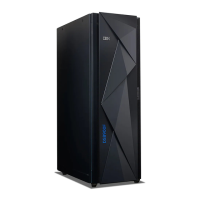
